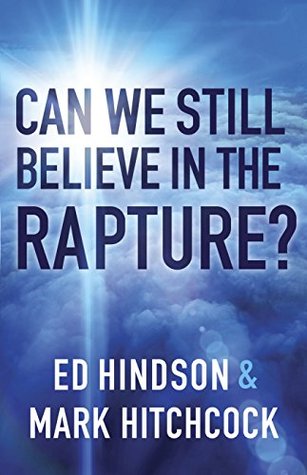Kindle Notes & Highlights
Pretribulationalists believe He will win by rapturing the church, converting Israel, condemning the world, fulfilling the millennial promises, and ushering in the eternal state.
However, the church has long held to an understanding of Jesus one day returning to this world as He promised in John 14:1-3. Believers often argue regarding the timing of this coming to rapture or take His people to be with Him, but they still agree the Scriptures teach that He will come.
The weakness with this view is not its inaccuracy, but its lack of concern for the Bible’s clear teachings about the end times. Consider how much of Scripture is prophetic in nature. Of the Bible’s 31,124 verses, 8,352 of them include predictions. This is 27 percent of the entire Bible! In the New Testament, one out of every 30 verses has to do with future events. If more than one-fourth of the Bible touches on the future, Christians should have a high level of concern for better understanding what those passages say and how they apply to today.
The early church was an evangelistic church. On the day the church began, 3,000 people were added to their number (Acts 2:41). The first written summary about the church in Jerusalem notes the Lord added to their number daily those who were being saved (Acts 2:47).
The biblical facts state that they will prophesy in Jerusalem (“the city where our Lord was crucified”) for 1,260 days, be killed, resurrected back to life, and raptured to heaven. Interpretive assumptions deal with the timing of these events, the identity of the two witnesses, the nature of the celebration that follows their death, and whether their resurrections and raptures are literal or figurative.
I believe they are taking statements as "fact" which is problematic. Also, note that the authors fail to think that the two witnesses themselves might be figurative, or that the timeline is figurative.
What is intriguing about this rapture of Jesus is that the angels reported Jesus will return “in just the same way” as the disciples had watched Him go into heaven. What way was this? Jesus left by being “lifted up” (Greek, epērthē) and “received” (Greek, hupelaben) by a cloud. His ascension was physical, personal, visible, and glorious.
Though his argument is valid, his conclusion is not the only option. In fact, his point could support either a pretribulation or posttribulation view. The only difference in the pretribulation view is the amount of time between the rapture of believers to meet the Lord in the air and when they will return with Him to earth in judgment at Armageddon.
In this assembly of people, believers are pictured as sheep, while unbelievers are depicted as goats. The problem for the postrib view is that if the rapture occurs as Jesus is descending to earth at His second coming, as posttrib proponents believe, that means all the sheep will caught up to meet Him in the air, leaving no sheep on earth for this judgment.
This is a WILD misunderstanding of the historical premillennial rapture. They have forgotten what John Piper said earlier and are setting up their own strawman
If the rapture happens in conjunction with the second coming, as posttribulationism teaches, one would expect the main biblical passage on the second coming to reference the rapture. Yet there is no mention of a rapture of saints being caught up to heaven anywhere in Revelation 19.
Oh boy. This one really misses what Rapture means to those who hold a post-Trib/historical premillenial view.
If details like the casting of the beast and the false prophet into the lake of fire are mentioned and the specific resurrection of the tribulation saints is described, how much more the Rapture and translation of the church as a whole should have been included if, as a matter of fact, it is part of this great event. Revelation 19–20 constitutes the major problem of posttribulationists. They have no scriptural proof for a posttribulational Rapture in the very passages that ought to include it.
“One is forced to ask, how could the Lamb of God die and rise again to save the Church from wrath and then allow her to pass through the wrath that He shall pour upon those who reject Him? Such inconsistency might be possible in the thinking of men, but not in the acts of the Son of God.”
They’re sequential, not simultaneous. The rapture must come before the Day of the Lord, not consummate it. The rapture and the Day of the Lord can hardly be parts of the same event, as posttribulationists maintain.
Third, in 1 Thessalonians 5:9 we read, “God has not destined us for wrath, but for obtaining salvation through our Lord Jesus Christ.” This verse tells us that believers have an appointment with salvation, not wrath. Many commentators believe the “wrath” in this verse refers to the wrath of hell, from which believers will be spared. Yet the entire context of 1 Thessalonians 5:1-8 is Day of the Lord wrath, not eternal wrath in hell.
There is no definite article here, so based on previous texts in this book, we cannot know who is being referred to.


